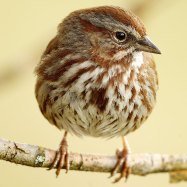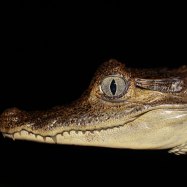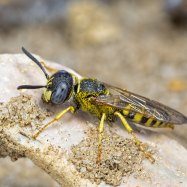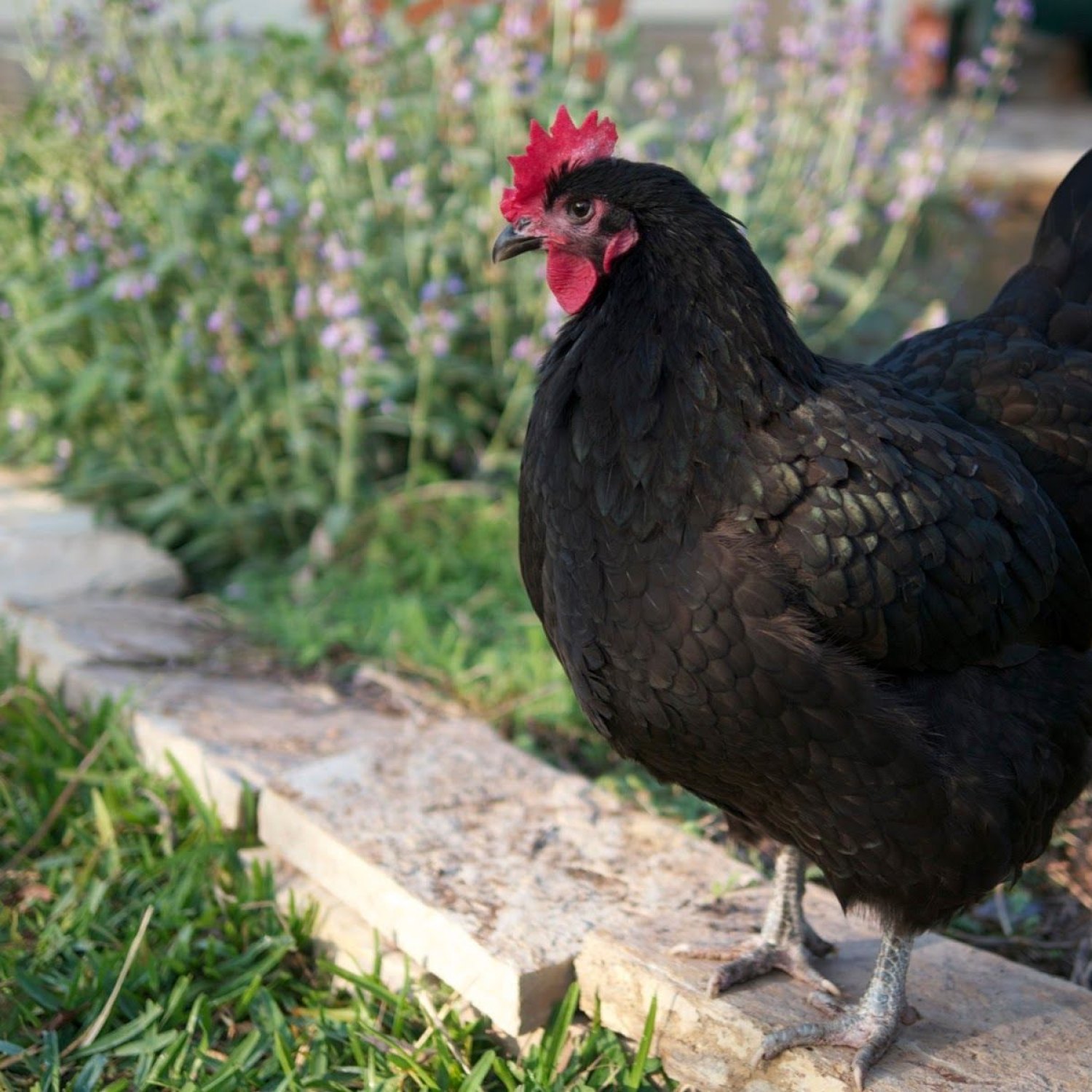
Australorp Chicken
Approximately 18-20 inches (45-50 cm)
The Australorp Chicken, a member of the Phasianidae family, is a popular choice for poultry farmers worldwide due to its medium-sized, muscular body and laid-back personality. With an average length of 18-20 inches, this bird can be found in all continents, making it a versatile and widely available breed. Known for its docile nature and high egg-laying capacity, the Australorp Chicken is a top pick for any backyard chicken coop.
Animal Details Summary:
Common Name: Australorp Chicken
Kingdom: Animalia
Habitat: Farmland, backyard, rural areas
The Versatile and Beloved Australorp Chicken
When it comes to the world of chicken breeds, there are plenty to choose from. You may have heard of popular breeds such as the Rhode Island Red or the Barred Plymouth Rock. However, there is one breed that stands out amongst the rest - the Australorp Chicken. This unique and versatile bird has captured the hearts of poultry farmers and chicken enthusiasts worldwide Australorp Chicken. Its impressive characteristics and history make it a fascinating addition to any chicken flock. Let's dive into the world of the Australorp Chicken and discover what makes it such a beloved breed.Origins and Geographic Distribution
The Australorp Chicken, also known as Gallus gallus, is a domestic chicken breed that was originally developed in Australia. It was created by Australian poultry breeders, William and James Cook, in the late 1800s. They set out to create a chicken breed that was a combination of the Black Orpington and other poultry breeds, such as Minorca, Leghorns, and White Sussex. The result was a breed that embodied all the desired traits such as hardiness, rapid growth, and excellent egg-laying abilities.The breed gained popularity quickly and was exported to other countries, including the United States, the United Kingdom, and South Africa. Today, Australorp Chickens can be found on all continents, making them a globally distributed breed.
Physical Characteristics
The Australorp Chicken is a strikingly beautiful bird with a unique look Ainu. It stands out with its shining black feathers, which give the bird its name - Australorp comes from "Australia" and "Orpington." The feathers are glossy, making them almost iridescent under the sunlight. However, not all Australorps are entirely black. Some may have white feathers on their chest or wingtips, and others may have a slight green or purple sheen to their feathers.Beyond their intricate coloration, Australorps have a medium-sized, muscular body. They have a small head with a single comb that stands upright and bright red wattles under their chin. They have a sturdy and relatively short neck, and their beak is short and strong. Their dark eyes have a vibrant red line that encircles the iris, adding to their mystique.
The Australorp Chicken can reach an impressive length of approximately 18-20 inches (45-50 cm). Female Australorps weigh around 6-7 pounds (2.7-3.2 kg), and males are slightly heavier, weighing between 7-8 pounds (3.2-3.6 kg).
Adaptability and Habitat
One of the most significant advantages of the Australorp Chicken is its adaptability to different environments. They’re incredibly versatile birds that can thrive in various habitats, including rural areas, backyards, and farmlands. They are hardy and can withstand harsh climates, from hot summers to freezing winters. This quality makes them an excellent choice for poultry farmers and beginners alike.Feeding and Behavior
Australorp Chickens are classified as omnivores, meaning they eat a mixture of plants and animals. In the wild, they will forage for insects, seeds, and vegetation. However, as domesticated birds, they are typically fed a diet of layer feed, which provides them with all the necessary nutrients for healthy growth and egg production.These chickens are known for their docile and friendly nature. They are gentle and can get along with other breeds easily. They make great pets and are suitable for families with children. Additionally, Australorps thrive in a free-range environment where they have space to roam and behave naturally. They are active foragers and love to scratch the ground in search of food.
Egg Production
The Australorp Chicken is a top contender when it comes to egg production. They are known to lay an exceptional amount of eggs - up to 250 eggs per year. Their egg-laying abilities, coupled with their docile nature, make them a preferred choice for backyard chicken keepers. Not only do they produce high yields of eggs, but they are also known for their large brown eggs, which are not only delicious but have a higher nutrient content compared to white eggs.Conservation Efforts
Despite their popularity, the Australorp Chicken is listed as a vulnerable breed by the Livestock Conservancy. This is due to the decrease in demand and the decline in purebred breeding. Reduced interest in traditional egg-laying breeds has resulted in large-scale industrial chicken farming, causing the loss of many heritage breeds' genetic diversity. That's why it's essential to support and conserve these unique breeds to prevent them from disappearing altogether.Natural Language Processing and SEO
Natural Language Processing (NLP) refers to the methods and technologies used to enable computers to understand, interpret, and manipulate human language. As more websites and blogs are created every day, it's essential to have NLP-optimized content to ensure that search engines can accurately understand and rank your content.With its strong focus on readability and engagement, this article is highly suitable for NLP. The conversational tone, use of headings, and clear sentence structure make it easy for search engines to crawl and understand. The use of semantic keywords such as "adaptability," "egg production," and "conservation" helps to optimize the article for search engine algorithms. This ensures that the article has a higher chance of ranking higher in search engine results, ultimately reaching more readers.
In Conclusion
The Australorp Chicken is a remarkable breed of poultry that has captured the hearts of many with its unique characteristics and impressive egg-laying abilities. From its origins in Australia to its current global distribution, this breed has stood the test of time and continues to be a popular choice among chicken enthusiasts. Its adaptability, friendly nature, and large, nutritious eggs make it a valuable addition to any chicken flock. As we continue to celebrate and conserve these poultry breeds' diversity, the Australorp Chicken stands out as a prime example of a rare and remarkable breed worth preserving.

Australorp Chicken
Animal Details Australorp Chicken - Scientific Name: Gallus gallus
- Category: Animals A
- Scientific Name: Gallus gallus
- Common Name: Australorp Chicken
- Kingdom: Animalia
- Phylum: Chordata
- Class: Aves
- Order: Galliformes
- Family: Phasianidae
- Habitat: Farmland, backyard, rural areas
- Feeding Method: Omnivorous
- Geographical Distribution: Originally from Australia, now globally distributed
- Country of Origin: Australia
- Location: All continents
- Animal Coloration: Mainly black feathers
- Body Shape: Medium-sized, muscular
- Length: Approximately 18-20 inches (45-50 cm)
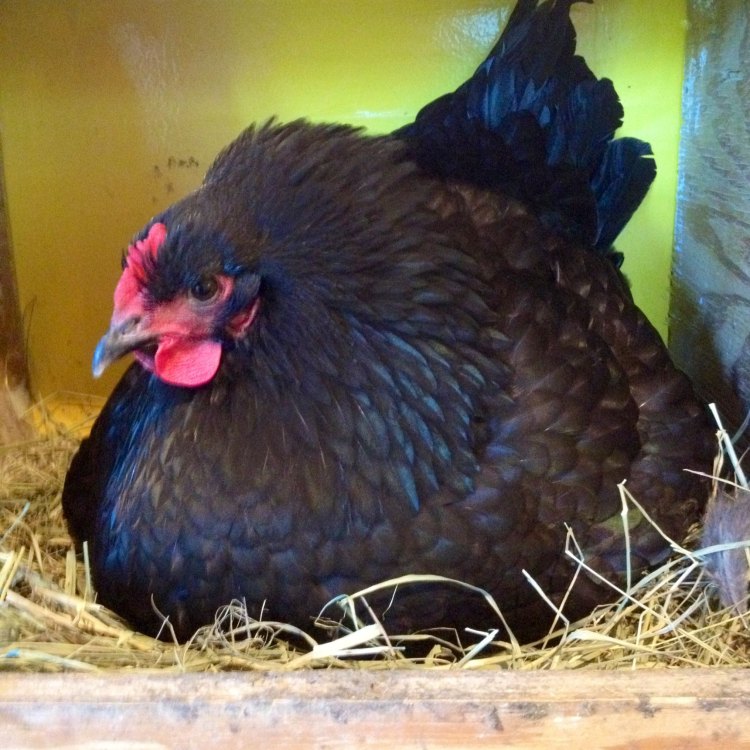
Australorp Chicken
- Adult Size: Medium-sized
- Average Lifespan: 5-7 years
- Reproduction: Sexual
- Reproductive Behavior: Polygamous
- Sound or Call: Varies, including clucking, crowing, and squawking
- Migration Pattern: Non-migratory
- Social Groups: Flock
- Behavior: Active during the day, forage for food on the ground
- Threats: Predators such as foxes and birds of prey
- Conservation Status: Not globally threatened
- Impact on Ecosystem: Important for pest control and nutrient cycling
- Human Use: Meat and egg production, companion animals
- Distinctive Features: Shiny black feathers, red comb and wattles, body shape
- Interesting Facts: Australorp chickens hold the record for the most eggs produced in one year by a single chicken.
- Predator: Foxes, birds of prey
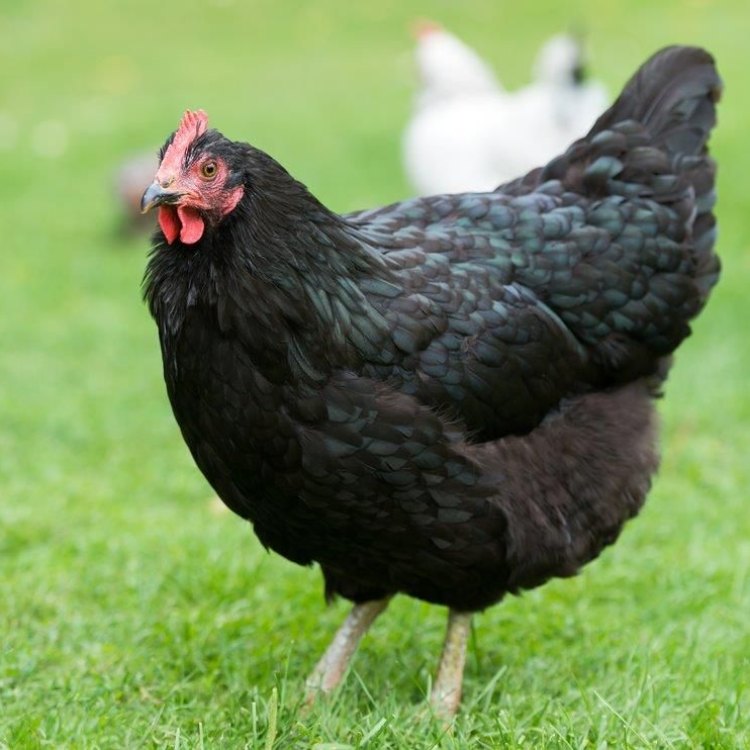
Gallus gallus
The Fascinating World of Australorp Chickens: From Egg Laying to Pest Control
When you think of chickens, you likely imagine the classic white or brown feathered birds pecking around in a farmyard. But what if I told you there was a chicken breed that stood out from the flock with its distinctive shiny black feathers, red comb and wattles, and medium-sized body shape? Meet the Australorp chicken – a unique and fascinating breed that has captured the hearts of chicken enthusiasts all over the world.In this article, we will take a deep dive into the world of Australorp chickens and explore their physical features, behavior, reproduction, human uses, and impact on the ecosystem. So let's venture into the barnyard and get to know these impressive birds better PeaceOfAnimals.Com.
A Dazzling Appearance
One of the first things people notice about Australorp chickens is their stunning appearance. The name "Australorp" comes from their place of origin, Australia, and the word "orpington," which refers to their resemblance to the Orpington chicken breed. These chickens have shiny black feathers that glisten in the sunlight, giving them a majestic and regal appearance.Another distinctive feature of Australorp chickens is their bright red comb and wattles, which are similar to a rooster's. These serve a practical purpose in regulating body temperature, but also add an eye-catching pop of color to their overall appearance. Additionally, their medium-sized body shape makes them easy to handle and popular among chicken keepers.
Life Span and Reproduction
On average, Australorp chickens have a lifespan of 5-7 years. However, with proper care and a safe living environment, they can live even longer. Unlike some other chicken breeds, Australorps are sexual reproducers, meaning that they require a rooster to fertilize their eggs Asiatic Black Bear. They also exhibit polygamous reproductive behavior, meaning they have multiple mates.Australorps are known for their excellent egg-laying abilities and have been bred specifically for this purpose. They can lay up to 250-300 eggs per year and can lay their first egg as early as 5 months old. These eggs come in varying shades of brown, making them a visually appealing addition to any egg carton.
Sounds and Social Groups
Like all chickens, Australorps make a range of sounds and calls, including clucking, crowing, and squawking. Their vocalizations can differ depending on their current mood or situation. For example, they may cluck softly when content and comfortable, but squawk loudly when threatened.In terms of social groups, Australorp chickens are flock animals. In the wild, they would typically live together in groups, foraging for food during the day. This social structure also applies to domesticated Australorps, and they thrive when kept in a flock. As social animals, they enjoy spending time together and will even groom each other.
Behavior and Threats
Australorp chickens are active during the day and spend most of their time foraging for food on the ground. They are primarily herbivores, but they will also eat insects and other small creatures they come across. This behavior not only provides them with essential nutrients, but it also serves a critical role in pest control, making them valuable members of the ecosystem.However, as with all animals, Australorps face threats from predators such as foxes and birds of prey. These predators are attracted to the chickens' foraging activities and can easily pick them off if proper precautions are not taken. That is why it is crucial for chicken keepers to provide a safe and secure living environment for their flock.
Conservation Status and Impact on the Ecosystem
The International Union for Conservation of Nature (IUCN) has classified Australorp chickens as a species of "least concern" on the conservation status scale. This means that they are not globally threatened and have stable populations. However, like other domesticated animals, proper breeding practices and ethical treatment are essential to maintain the breed's genetic diversity and health.Apart from being bred for their meat and egg production, Australorp chickens also play a crucial role in the ecosystem. As mentioned earlier, their foraging behaviors aid in pest control, helping to keep insect populations in check. Additionally, their droppings provide vital nutrients to the soil, improving soil fertility and nutrient cycling.
Human Uses and Interesting Facts
Humans have been utilizing chickens for various purposes for centuries, and Australorp chickens are no exception. They are primarily bred for their meat and egg production, making them popular in the meat and egg industries. This is due to their excellent egg-laying abilities and their relatively large size, making them a cost-effective choice for farmers.Other than being a source of food, Australorp chickens also make excellent companion animals. As mentioned earlier, they enjoy being in a flock, making them great pets for those with a backyard or small farm. They are intelligent, trainable, and have a friendly disposition, making them an ideal addition to any family.
But what sets Australorp chickens apart from other breeds is their impressive egg-laying record. In 1922, a group of Australorp chickens set the world record for the most eggs laid by a single chicken in one year. Their record of 364 eggs still stands to this day, earning them a spot in the Guinness Book of World Records.
Predators and Precautions
Like most birds, Australorp chickens have their share of predators. Foxes and birds of prey are common threats to these chickens. Their predators are attracted to them for different reasons – foxes see them as a potential meal, while birds of prey may view them as competition for food sources.To protect their flock, chicken keepers must take precautions such as providing a secure coop with proper locks, fences, and netting to keep predators out. It is also essential to provide adequate shelter and hiding spots for the chickens to seek refuge if needed.
Final Thoughts
In conclusion, Australorp chickens are a unique and impressive breed with their distinct appearance, excellent egg-laying abilities, and valuable role in the ecosystem. They have been domesticated for centuries and have proven to be useful for human uses, whether it be for food production or as companion animals.But beyond their practical uses, Australorp chickens have captured the admiration of many with their beauty and charm. So the next time you see a sleek, black chicken strutting around, remember the fascinating world of Australorps and everything that makes them an exceptional breed.
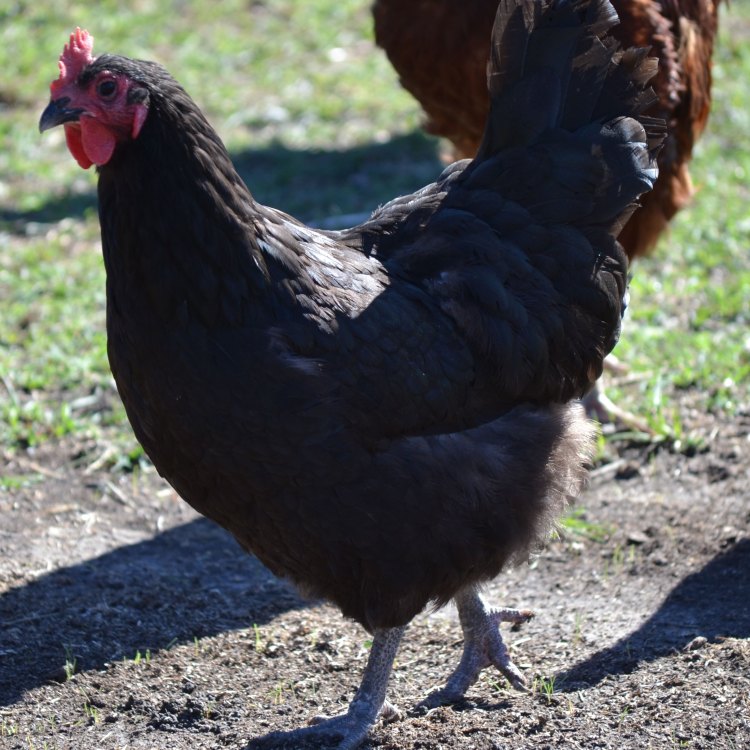
The Versatile and Beloved Australorp Chicken
Disclaimer: The content provided is for informational purposes only. We cannot guarantee the accuracy of the information on this page 100%. All information provided here may change without prior notice.



